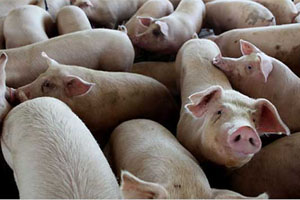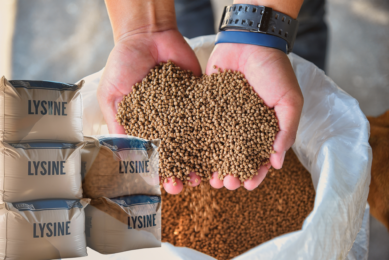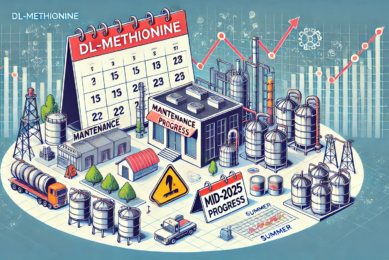Study: Effect of heat damaged feed on pigs

The animal Article of the Month for October from Cambridge Journals is entitled ‘Effects of balancing crystalline amino acids in diets containing heat-damaged soybean meal or distillers dried grains with solubles fed to weanling pigs’.
Many of the feed ingredients that are used in formulating diets for pigs have gone through heating or drying to make the ingredient stable for conservation. However, every time heat is applied to a feed ingredient, there is a risk that the ingredient can be overheated, which will result in the Maillard reaction that induces heat damage to the ingredient. Maillard reactions will result in reduced concentrations of the indispensable amino acid lysine and other amino acids and the digestibility of lysine and most other amino acids also is reduced if feed ingredients are heat damaged.
As a consequence, if heat damaged feed ingredients are included in diets fed to pigs, the supply of digestible amino acids will be less than assumed if calculations are based on the concentration of digestible amino acids in feed ingredients that are not heat damaged. If such diets are fed to growing pigs, this will result in reduced animal growth performance. However, if it is recognized that a protein containing feed ingredient is heat damaged, and therefore has a reduced concentration of digestible amino acids, it may be possible to avoid the reduction in animal performance by adding crystalline amino acids to the diet to compensate for the reduction in concentrations of digestible amino acids that were caused by over-heating the ingredient.
To test this hypothesis, two experiments were conducted using weanling pigs that were approximately 35 days of age at the beginning of the experiments. Soybean meal or distillers dried grains with solubles that were either not heat damaged or had intentionally been heat damaged were included in the diets used in the two experiments and diets were fed to the pigs for 21 days. Results of both experiments demonstrated that growth performance of the pigs was compromised if the heat damaged ingredients were included in the diets.
However, results also indicated that, if crystalline amino acids were added to the diets, performance could be improved over pigs fed diets in which no additional crystalline amino acids were offered, demonstrating that the reason for the reduced performance of pigs fed the diets containing the heat damaged ingredients at least partly was a result of the reduced concentration of digestible amino acids in these diets. The fact that performance was not fully restored to levels obtained by pigs fed the control diet even with inclusion of crystalline amino acids indicates that other nutrients in the ingredients also may have been heat damaged.
To avoid loss of animal productivity, future research is needed to develop rapid procedures to identify feed ingredients that are heat damaged. It is possible that Near Infrared (NIR) technology may be used in this effort, which will allow a rapid screening of feed ingredients. Research is also needed to investigate effects of over-heating on the digestibility of lipids, carbohydrates, and energy to further elucidate effects of heat damage on feed ingredients. Based on the current results, however, it is recommended that if heat damaged feed ingredients are used, extra crystalline amino acids are included in the formulations. It is possible that inclusion of extra energy in diets containing heat damaged ingredients is also needed because of possible cross-linkages between dietary lipids and components of heat damage.
Authors: F. N. Almeida , J. K. Htoo, , J. Thomson and H. H. Stein











